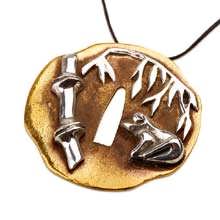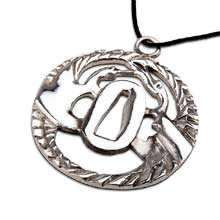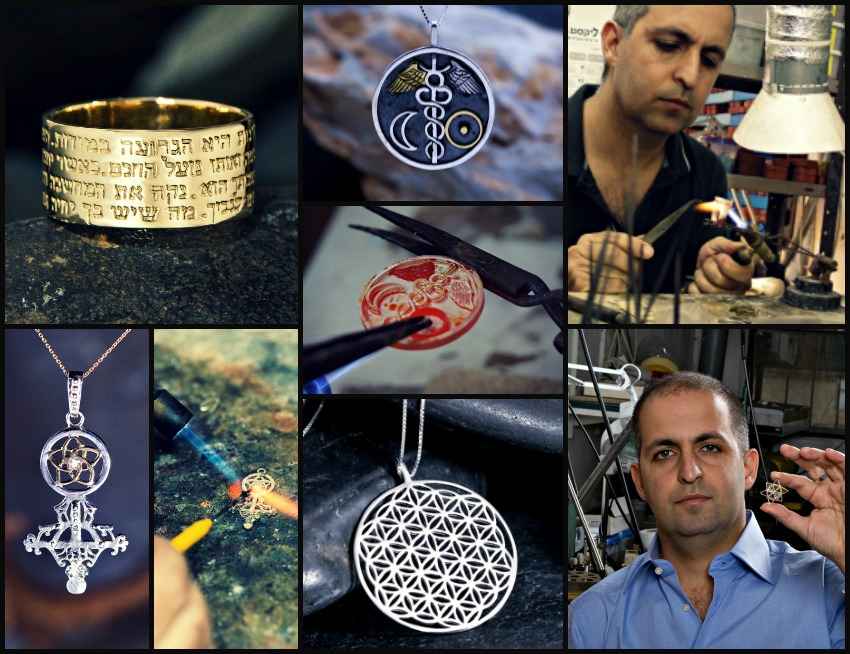Tsuba - Samurai Katana's Sword
Guard
Zen symbol of "The Diamond Sword"
The katana, which is the
generic term the West has adopted to refer to most Japanese
swords, is undoubtedly an object of functionality. The samurai who
were the only ones allowed to own and to wield this sword obtain
only the best katana available, crafted by the best sword-smiths
around. The life of a samurai depends on the quality of his sword.
The steel must not break during battle, or the samurai would have
to pay for choosing a blade of low quality with his life.
That is an emphasis on the functionality of the
katana. But since samurai show off their wealth and status with
the adornments on their swords, the case for the katana as a work
of art is also very important. These adornments on the Japanese
sword are found in its hilt and handle, as well as on its tsuba.
What is the Tsuba?
The tsuba is the katana's sword guard. Its function is to keep the
sword balanced as it is held in a fight and to prevent the wielder
from slipping his hand across its blade and injuring
himself. In a lot of sword fighting techniques, the tsuba is
also used to block an incoming slash from the opponent's sword.
During the medieval period of Japan, particularly the Muromachi
and the Momoyama periods, which lasted from the 1300s to the
1600s, the tsuba is designed more for functional rather than for
aesthetic purposes. They are made of hard metal to ensure the
sword wielder's survival in a fight in these ages of war in the
history of Japan.
By the time of the Edo period, however, the tsuba became
ornamental rather than functional on a sword. This is because the
Edo period was mostly a period of peace when the states under the
Japanese Empire became united under shogunate rule. The tsuba is
made for ostentatious display when a samurai and his lord appeared
at the shogun's court.
The Form of a Tsuba
The tsuba can be of two types. One type is made of iron and is
called Tetsu. The other type is created using softer metals like
gold, copper and silver, or alloys. This other type is called
Kinko. Both the Tetsu and the Kinko tsuba can be adorned
with carvings, cutouts or other kinds of decor.
Tsuba can be found in all kinds of shapes, both regular and
irregular. Artists specializing in the crafting of tsuba have a
license to be as whimsical as they wish on their work.
Nonetheless, the tsuba can be grouped into four general shapes.
These four shapes are:
- Maru gata - This is
the round tsuba, which is its most common shape. Some
round tsuba can be elliptical or oval rather than perfectly
round. Some mimic the shape of flowers, such as the
chrysanthemum.
- Kaku gata - The
square tsuba, often with rounded corners. The Kaku gata can
also be hexagonal or octagonal or even trapezoidal.
- Shitogi - The
Shitogi tsuba looks like the type of rice cake that is offered
during Shinto rituals. Katana with Shitogi tsuba are almost
always ceremonial swords.
- Mokko gata - The
Mokko gata has four lobes and look like the surface of cut
melon. There are many sub-types under the Mokko gata and all
vary their intricate designs.
The Tsuba Today
Since the samurai class is now gone and obsolete in this modern
era, tsuba has come to exist separately from the katana as objects
of art. There are art collectors who specialize on the tsuba and
there are many schools of tsuba craftsmanship in Japan, with each
school using methods that have been handed down for generations.
Some families in Japan who have ancestors in the samurai class
often hand down tsuba as heirlooms depicting family mottos, seals
and insignias in stylized designs.
Tsuba Jewelry
About the Author
David Weitzman
The jewelry artist David Weitzman combines ancient and sacred knowledge into a unique line of jewelry designed to bring people both beauty and inspiration. David's artwork harnesses the power of spiritual symbols and sacred geometry from around the world to bring those wearing this sacred jewelry happiness, vitality, excitement, and love.



